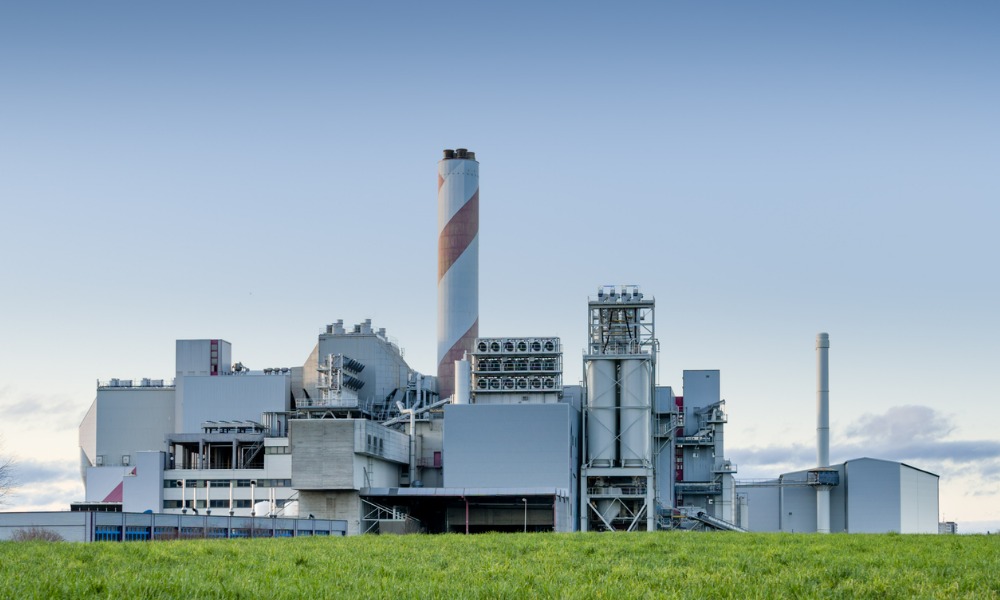Carbon capture is growing - and firm is tracking it via its ETF - but direct air capture of emissions is still more expensive than polluting

Carbon capture – or removal – is one of the new clean tech disruptive technology themes to watch for a breakthrough as interest picks up in mitigating, and inhibiting climate change, Warner Wen, Global X’s Research Director for Canada, recently told Wealth Professional.
“Carbon removal is expected to play a key role in the transition to a net-zero energy system in which the amount of CO2 released into the atmosphere is equivalent to the amount being removed,” he said. “Because certain sectors, such as aviation and heavy industry, are difficult to decarbonise, we need carbon removal technologies to offset these emissions and support a faster transition.
“The fact is you have to take away some of the C02 (carbon dioxide) and some of the greenhouse gases from the atmosphere in order to achieve the sustainable level of air quality,” he said. “If you just stop emitting and maybe reduced emission as a source today, it’s not enough. You have to have a negative carbon strategy on top of that to take away some of the existing carbon from the atmosphere so you can get to a better place.
“That’s because we humans have been emitting so much CO2 into the atmosphere for the past 100 years. So, that’s why we need to take really aggressive action. Carbon removal, which is a relatively new technology, is going to be the key to that.”
CCUS gaining momentum
Wen noted that the idea of using carbon capture technology to mitigate climate change has been around for awhile. The first large-scale carbon capture, use, and storage (CCUS) commercial project was established in 1972. It was initially used to enhance oil recovery, with carbon dioxide being pumped into an oil field to help oil companies retrieve more oil. In the 1980s, carbon capture technology was studied for climate mitigation and work with it began to ramp up in the 1990s. After years of declining investments, however, plans for more than 30 new CCUS products have been announced since 2017. There are currently 21 large-scale CCUS projects around the globe.
This isn’t as long a history as another disruptive technology poised for a breakthrough – the electric vehicles – which Wen noted launched a century ago.
This process allows carbon dioxide emissions from burning fossil fuels to be captured at source, typically in power plants or factories, so they don’t reach the atmosphere. They do that by fitting factory chimneys with solvent filters, which trap caron emissions before they escape. The captured emissions are then piped or shipped to where they can be stored or used. Most of the CO2 will be injected deep underground, which is called enhanced oil recovery. Wen said that’s where fossil fuel gas came from in the first place – and how this CCUS tech was originally used.
CCUS technology captures as much as 90% of emissions when used alongside fossil fuel energy sources. The cost of capture tech is limiting adoption, but some expects costs to drop by more than 40% in the early 2020s.
“The balancing act here is about cost and funding for large-scale carbon capture projects,” he said. “even with enhanced oil recovery, at least we are offsetting some of the net carbon footprint.”
Direct Air Capture
One particularly cutting-edge area of CCUS is direct air capture (DAC), where carbon dioxide is extracted directly from the atmosphere rather than a factory smokestack. That means it can capture distributed sources, like car exhaust fumes. They can be independent from power plants or factories and located close to storage sites, so they don’t have to transport CO2.
“Think of it like a tree. Trees can capture CO2 anywhere,” said Wen. “They don’t need to be in the same location as a factory, which is the source of emissions. So, this is extremely flexible and also powerful in capturing, for example, the emissions from cars.”
DAC is expensive, so isn’t commercially profitable yet because the cost per tonne to capture carbon dioxide is still far more than the carbon price.
“The problem with high costs is it’s not worth it because it’s actually more expensive to do the carbon capture than just pollute the air,” said Wen.
But he believes that as the technology cost keeps declining and there are more policy incentives that make it more expensive to pollute than do carbon capture, large-scale DAC could accelerate in the 2020s. In fact, the first large-scale plant is now being developed in the U.S. in a partnership between Occidental Petroleum and Carbon Engineering – a British Columbian company founded in 2009 and backed by Bill Gates and others. They’ve announced the plant will capture up to one mega-ton of CO2 a year to use in enhanced oil recovery. It could become operational as early as 2023.
“We’re monitoring and tracking this theme closely through our ETF,” said Wen, noting Global X has 30 thematic ETFs, 29 of which are individual themes. “We always want to make sure that our analytics, research, and products, reflect the pure exposure of the theme for investors.”



